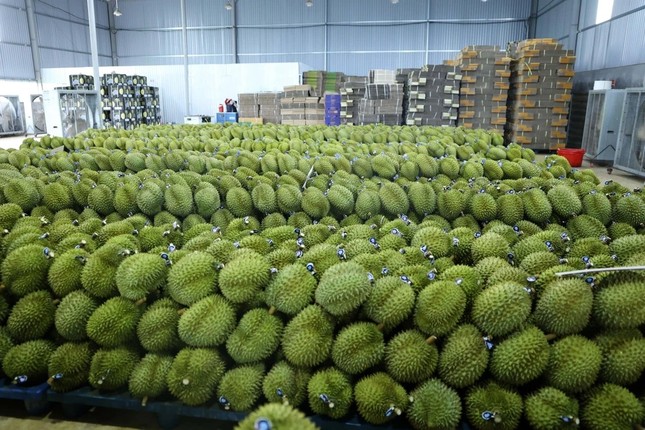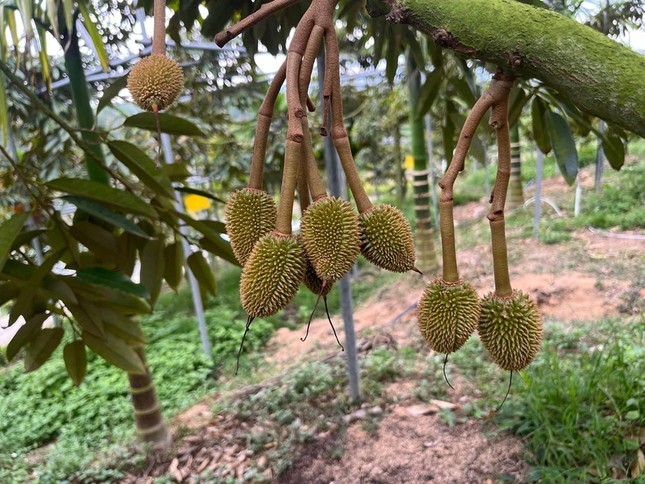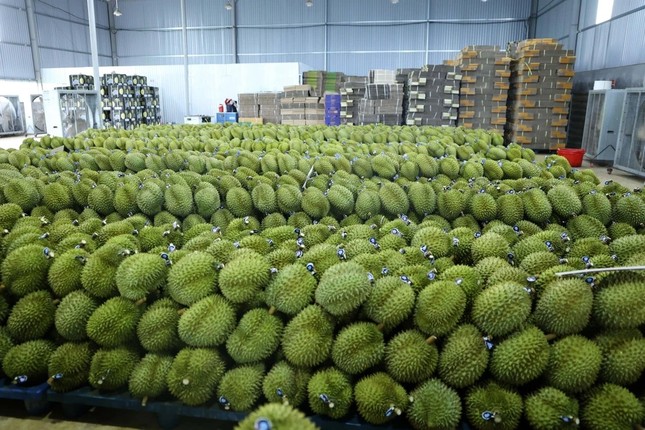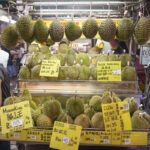The Promised Land
The fresh durian import market in China has been on a record-breaking growth spurt for four consecutive years. In 2024, the country imported approximately 1.56 million tons of durian, valued at $6.99 billion – an all-time high.
Specifically, in April this year, China imported more than 61,000 tons of durian, worth $345.2 million – a surge of over 270% from the previous month, according to Produce Report. The average price reached $5.64/kg, the highest in 13 months, indicating a strong recovery in consumption after a downturn.

China consumes over 85% of the world’s durian supply annually. Illustration: I.T.
This market expansion goes hand in hand with China’s open-door policy on durian imports from multiple Southeast Asian countries. Before 2022, Thailand almost exclusively supplied durians to China, but the landscape has changed rapidly since then.
Vietnam officially joined the game in 2022, followed by the Philippines in 2023 and Malaysia in 2024. This year, Indonesia has also made headway in negotiating durian exports to China. Laos is also working diligently to finalize technical procedures to enter this arena.
Vietnam had a remarkable growth spurt, with export revenue soaring to $2.94 billion in 2024, a 37.6% increase from 2023. Vietnam’s market share climbed to 42.1%, narrowing the gap with Thailand and creating a duopoly in the Chinese market.
The entry of several Southeast Asian countries has intensified the race for durian market share in China like never before.
While Thailand held 68% of the market share in 2023, that number dropped to 57.4% in 2024 due to unfavorable weather conditions affecting their yield and quality.
The Philippines and Malaysia, despite being new players, have made inroads, claiming about 0.5% of the market share.
The Race Heats Up
Since the beginning of this year, China has tightened quarantine and quality regulations. Every exported batch undergoes a 100% inspection, demanding high standards for ripeness, food safety, and traceability.
This situation forces major market shareholders like Vietnam and Thailand to adapt to Chinese consumer demands and opens opportunities for other competitors to enter this billion-people market.
The race for durian market share in China is heating up as numerous countries consecutively announce their successful penetration into this billion-people market.
Notably, in May, Indonesia – the largest durian producer in Southeast Asia, with approximately 2 million tons annually – received China’s approval for frozen durian exports, heralding intense competition in the future.

Thai durians undergo CT scans before export. Illustration: Thai Government.
Meanwhile, Thailand refuses to cede its advantage. In early May, they implemented CT scan technology integrated with AI, enabling the inspection of each durian in just 3 seconds to determine ripeness and detect pests. These devices can handle up to 1,200 durians per hour, enhancing sorting efficiency and reducing rejection rates.
Furthermore, Thailand established a “4-No” inspection system (no unripe, diseased, fraudulent, or chemically treated durians) and developed a multi-channel logistics chain, including road and air transportation. This system facilitates the clearance of over 500 containers of durian per day through Chinese customs.
Since the beginning of this year, Vietnam has tightened control over region codes, packaging facility codes, and product quality. In late May, Vietnam officially negotiated with Chinese Customs to open a “green channel” for durian imports. While promoting fresh durian shipments, Vietnam also swiftly delivered frozen durian batches to Chinese consumers.
According to Mr. Dang Phuc Nguyen, Secretary-General of the Vietnam Fruit and Vegetable Association, “With the advantages of a long harvest season, competitive pricing, and expanding sourcing areas, developing exports of frozen durian will be a crucial strategy to reach remote areas in China, where fresh durian distribution is challenging due to underdeveloped preservation infrastructure.”

China’s Ambition to Grow Durian. Illustration: SCMP.
China is not just a passive importer; they are also venturing into durian cultivation. Hainan Province currently has over 2,000 hectares of durian plantations, with initial yields already reaching the domestic market. Additionally, Chinese companies are investing in sourcing areas in Southern Laos, which is anticipated to become the world’s fourth-largest durian producer in the future.
On the global durian map, China is no longer the exclusive domain of any single country. From Thailand and Vietnam to Indonesia, Laos, and Malaysia, each nation is exerting its utmost efforts, leveraging policies and technology, to capture a precious slice of this lucrative market.
Experts predict that the “durian war” will escalate in the coming years, not just in terms of quantity but also quality, delivery speed, and adaptability to the ever-evolving demands of the billion-people market.
According to SCMP, People’s Daily, Produce Report, People, Bangkok Post

















